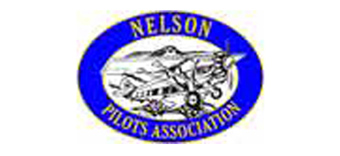We love our airport, and it shows!
It is in a prime location, within walking distance to the city centre, only meters from the pristine Kootenay River, and nestled in the beautiful Selkirk Mountains.
This airport provides pilots with challenging, non-standard, circuit procedures to keep everyone on their toes and never bored.
Here is an excerpt from the Canada Flight Supplement for Nelson, BC (CZNL):

History of Flight in Nelson
One hundred years ago the history of powered flight began. Wilbur and Orville Wright made that momentous first flight at Kitty Hawk, North Carolina. A mere 8 years later the very first airplane arrived in the City of Nelson. In his book “Barnstormers to Bush Pilots”, Peter Corley-Smith recounts from a Nelson Daily News article of Sept. 30, 1912, that ‘the aeroplane has arrived in Nelson and the airman is on his way’. Walter Edwards, an American pilot, and his airplane arrived on that day to participate in Nelson’s annual Fruit Fair.
But Edwards was dismayed – he had not realized that the Fair Grounds from which he had to fly from was surrounded by power and telephone lines, as well as fences. “Had I known the lay of the land I never would have agreed to my manager signing the contract to fly here”, he told a reporter. His skill, as it turned out was equal to his courage and he put on a ‘brave and creditable performance’. From these humble beginnings aviation and the Nelson airport have become an economic asset and an important aspect of people’s lifestyle.
Airport History
The airport was built shortly after the Second World War on property purchased from CP Rail and the Ministry of the Environment. The City received a federal grant to purchase the land. Over the years, the city was successful in obtaining grants for airport improvements i.e. runway and apron paving, fencing, construction of the terminal building etc. from various levels of government. Recognizing the need for improvements and application for grants to a large extent have been initiated by the Nelson Pilots Association (NPA).
Facilities
The airport is located on the City’s western waterfront and accessed via Lakeside Drive off Hall Street. A short walkway along Cottonwood Creek connects it to the downtown area while a short drive to Highway 3A provides access to surrounding areas. Adjacent to the land aerodrome is a floatplane facility with a dock attached to the public wharf at the Prestige Hotel.
The single runway is 3100’ long and 75’ wide. A taxi way leads from the apron to the runway of which both ends 04 and 22 are used for both fixed wing and rotary wing (helicopter) operations. The runway was designed and built to Transport Canada Standards and recent (November 2003) testing by Pennco Engineering has found that the surface and subsurface still meet or exceed these standards
There is also a City-owned aviation fuel-dispensing system. Along the southern edge of the apron, hangars, tie-downs and a terminal building are located and leased out by the City. The land area of the airport is small but adequate for existing purposes. There may be land available for some future expansion to the east of the apron.
There is a surprisingly large number of recreational airport users, mostly hobby pilots. In Nelson and area, approximately 100 licensed pilots use the airport at one time or another for recreational flying, either with their own or a rented plane. The Nelson Pilots Association (NPA) was formed in 1947 and enjoys a long history of providing volunteer support to the City of Nelson in the construction and operation of the airport – that tradition and commitment are maintained to this day by over 45 members and their families. Some of them relocated here precisely for the unique opportunity that the combination of lifestyle amenities and local airport offers.
Training and Education
Air Cadets, Young Eagles, student pilots all come alive when they walk through the doors at our local airport. Their eyes sparkle, their voices raise, and their smiles widen. They are energized by the anticipation of another flight. Their friends would see them as different people when they are at the airport. The excitement is well founded. Few activities teach their participants to combine knowledge, skill, experience, coordination, logic, initiative and common sense to succeed in a three-dimensional environment. Learning to fly is like climbing a mini Mt. Everest. Few activities match aviation’s challenge to learn and to accomplish. Nelson’s community airport is often their first exposure to aviation, the pilots of the future will be from among their ranks.
